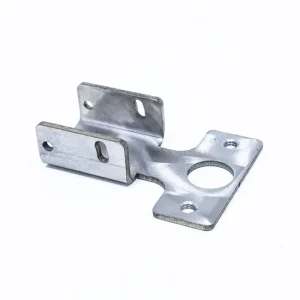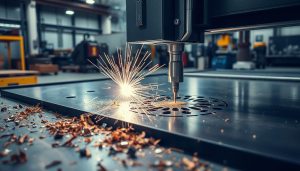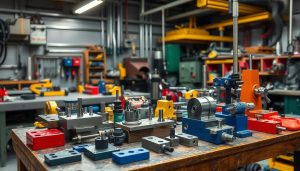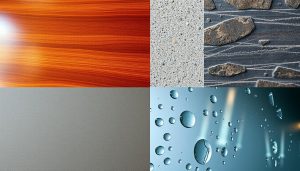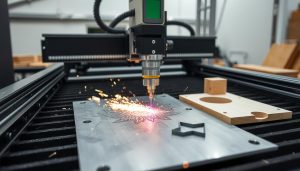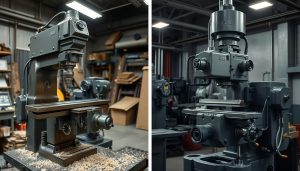In the world of engineering and design, springs play a crucial role in a wide range of applications, from everyday household items to complex industrial machinery. These versatile components come in various shapes, sizes, and functionalities, each tailored to meet specific needs. In this article, we’ll explore the different types of springs, their unique characteristics, and how they contribute to the smooth operation of the products and systems we rely on every day.
Springs are elastic mechanical devices that store and release energy, enabling them to perform a variety of tasks. They can be found in everything from the suspension systems of automobiles to the mechanisms that power your favorite kitchen appliances. By understanding the different types of springs and their applications, engineers and designers can create innovative solutions that enhance the performance, reliability, and user experience of their products.
Key Takeaways
- Springs are essential components in a wide range of engineering and design applications.
- The main types of springs include compression, extension, torsion, and leaf springs, each with unique characteristics and uses.
- Specialized springs, such as gas springs and constant force springs, serve specific functions in more complex systems.
- The durability and performance of springs are largely dependent on the materials used in their manufacturing.
- Choosing the right spring supplier, like Shixinproto, is crucial for ensuring the quality and reliability of spring-based products.
Common Types of Springs
When it comes to mechanical systems and everyday objects, springs play a crucial role in providing essential functions. Among the most common types of springs are compression springs, extension springs, torsion springs, and leaf springs. Each of these spring varieties boasts unique characteristics and applications that make them indispensable in various industries.
Compression Springs
Compression springs are designed to resist compressive forces, storing energy when compressed and releasing it when the force is removed. These versatile springs are found in a wide range of products, from household appliances to automotive suspensions, providing cushioning and shock absorption.
Extension Springs
Extension springs are used to store energy when stretched, pulling objects back to their original position. They are commonly seen in garage doors, exercise equipment, and even some types of furniture, where their ability to generate a pulling force is essential.
Torsion Springs
Torsion springs are coiled springs that store energy through twisting or rotational motion. These springs are often used in clocks, garage door mechanisms, and various mechanical devices that require a rotational force to operate effectively.
Leaf Springs
Leaf springs are a type of spring that consists of a series of curved steel plates stacked on top of each other. They are commonly used in the suspension systems of vehicles, providing a smooth and stable ride by absorbing shocks and vibrations.
Each of these spring types serves a unique purpose, and understanding their specific characteristics is crucial when selecting the right spring for a particular application. Whether it’s compression springs, extension springs, torsion springs, or leaf springs, the choice of spring can make a significant difference in the performance and reliability of a mechanical system.
Specialized Springs
In the world of engineering and product design, specialized springs play a vital role in addressing unique challenges and enhancing overall performance. Two such specialized spring types that have gained significant attention are gas springs and constant force springs.
Gas Springs
Gas springs, also known as pneumatic springs, are a unique type of spring that utilizes the compressibility of gas to store and release energy. These specialized springs are commonly found in applications where a constant or gradually changing force is required, such as in office chairs, vehicle liftgates, and medical equipment. The internal gas chamber provides a smooth, controlled movement, making gas springs an ideal choice for applications that demand precise and consistent force application.
Constant Force Springs
Constant force springs, on the other hand, are designed to provide a consistent force throughout their entire range of motion. Unlike traditional springs that exhibit a linear force-displacement relationship, constant force springs maintain a nearly constant force regardless of the amount of compression or extension. This unique property makes them valuable in applications where a consistent, predictable force is essential, such as in medical devices, safety systems, and precision instruments.
Both gas springs and constant force springs are examples of the innovative and specialized spring types that engineers and designers utilize to address unique engineering challenges and enhance product performance across various industries. These specialized springs offer distinct advantages and are often critical components in the development of advanced, high-performance products.

Spring Materials and Durability
When it comes to spring manufacturing, the choice of materials plays a crucial role in determining the spring’s performance and longevity. From durable steel alloys to cutting-edge titanium and composites, the world of spring materials offers a diverse range of options to meet the demands of various applications.
Common Materials for Spring Manufacturing
One of the most widely used materials in spring production is steel. Steel alloys, such as carbon steel and stainless steel, offer excellent strength, corrosion resistance, and fatigue life, making them ideal for a wide range of spring applications. Titanium is another popular choice, prized for its exceptional strength-to-weight ratio and resistance to corrosion, often used in high-performance and aerospace applications.
- Steel Alloys (Carbon Steel, Stainless Steel)
- Titanium
- Composite Materials (Fiber-reinforced Polymers)
In addition to traditional metals, innovative composite materials, such as fiber-reinforced polymers, are gaining traction in the spring manufacturing industry. These materials combine high strength, low weight, and excellent corrosion resistance, making them suitable for applications where weight and environmental factors are critical considerations.

Regardless of the material used, factors such as heat treatment, surface finishing, and manufacturing processes can significantly impact the spring’s durability and lifespan. Proper design, material selection, and production techniques are essential to ensure the spring can withstand the demands of its intended use, whether it’s in industrial machinery, automotive applications, or medical devices.
“The choice of spring materials is a critical decision that can make or break the performance and reliability of a product.”
By understanding the properties and capabilities of various spring materials, designers and manufacturers can optimize their designs to deliver durable, long-lasting springs that meet the unique requirements of their customers and applications.
Why Choose Shixinproto for Spring Manufacturing
When it comes to spring manufacturing, Shixinproto stands out as a leader in the industry. With decades of experience and a commitment to innovation, the company has earned a reputation for producing high-quality springs that meet the diverse needs of its clients. Whether you require standard compression, extension, torsion, or leaf springs, or need a custom solution for your unique application, Shixinproto has the expertise and capabilities to deliver.
At the heart of Shixinproto’s success is a dedication to quality control and precision engineering. Each spring is meticulously crafted using the finest materials and state-of-the-art manufacturing techniques, ensuring consistent performance and durability. The company’s commitment to customer satisfaction is further reflected in its ability to provide tailored solutions, working closely with clients to understand their specific requirements and design springs that exceed their expectations.
Shixinproto’s expertise extends beyond standard spring offerings, as the company also specializes in the production of advanced spring types, such as gas springs and constant force springs. These specialized solutions are particularly valuable in industries that demand high-performance, reliable components, making Shixinproto an invaluable partner for a wide range of applications.
